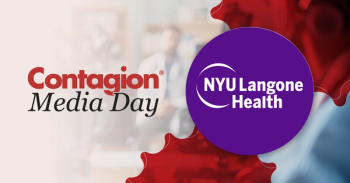
Survey Explores How Behavioral Model May Help Increase PrEP Use in At-Risk Groups
While the United States has seen significant increases in pre-exposure prophylaxis (PrEP) use among those at risk for HIV infection, PrEP uptake rates are still low overall in men who have sex with men, as well as in transgender individuals. A new study examines how a behavior model may help increase PrEP use in these at-risk groups.
Although the use of
The Information-Motivation-Behavioral Skills (IMB) model is based on the theory that information about a target behavior and motivation to perform a certain behavior leads to the development of relevant behavioral skills and has been applied in prevention interventions such as those focused on condom use. For the study, 476 participants completed an anonymous paper survey at a community event in a mid-sized Midwestern US city in June 2016. Participants were 18 years of age or older and identified as male, a man, or transgender. The study team tested the IMB model with a subsample of 357 participants who were HIV-negative MSM and transgender individuals.
The survey included measurements of several factors including demographics and PrEP knowledge, attitudes, stigma, intentions, and use. On average, survey participants answered less than half of the PrEP knowledge questions correctly. Attitudes toward PrEP were generally positive. Among the subsample of HIV-negative MSM and transgender individuals, only 12% were taking PrEP, although 69% had heard of PrEP, and 37% said they would probably or definitely start taking PrEP in the next 3 months.
In an interview with Contagion®, study author Jennifer Walsh, PhD, pointed out that newer survey data show that PrEP awareness grew to 76% by the summer of 2018. Still, nearly half of MSM overall say they’re concerned about the cost of PrEP.
“Researchers have identified many potential barriers to PrEP use. From [the results of] qualitative work that other researchers have conducted, it seems like socioeconomic factors and structural barriers are quite important,” Dr. Walsh said when speaking of the divide between PrEP awareness and use. “Although there are several modes of financial assistance available to help with the costs of PrEP, potential PrEP users may not be aware of how to access assistance, and assistance may not help with all costs.”
“In addition to these structural barriers, I chose to focus this research on the constructs in the IMB model because there is evidence that knowledge, attitudes, stigma, social norms, and self-efficacy may impact willingness to use PrEP and PrEP use itself. For example, some individuals who could be good candidates for PrEP might be unaware of it or have misperceptions about it. Additionally, qualitative work has suggested that some potential PrEP users perceive stigma related to PrEP use, which may make them reluctant to use it,” Dr. Walsh concluded, adding that interactions with health care providers may also pose a barrier to PrEP for some. “The research presented in this paper suggests that targeting information, motivation, and behavioral skills may help increase PrEP use among MSM and transgender individuals.”
Newsletter
Stay ahead of emerging infectious disease threats with expert insights and breaking research. Subscribe now to get updates delivered straight to your inbox.



















































































































































































































































































